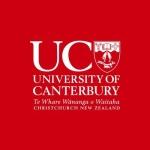UC researching Canterbury hospitals' collective resilience following earthquakes
A University of Canterbury (UC) researcher is looking at all the hospitals in Canterbury to determine their collective resilience as a network during the earthquakes.
UC masters student Jason McIntosh is seeking to gauge the resilience of hospitals, hospital networks and further define ways to provide continued healthcare following earthquakes.
Jason is providing recommendations for other hospital networks in seismically active cities. He has just presented a paper at the fourth World Association for Disaster and Emergency Medicine Pan American Regional Conference in Leedsburg, Virginia, USA.
``I have been assessing the seismic vulnerability of Canterbury hospitals and their preparedness to respond to crises events by analysing the hospital networks response to the Canterbury earthquakes,'' McIntosh said.
``I aim to generate a method to assess the seismic vulnerability of hospital networks within New Zealand and abroad. Good anti-seismic design criteria for structural, non-structural and service components, combined with good knowledge and planning for seismic risk can help building network resilience.
``The challenge of building resilience into complex systems, like healthcare systems, is that they are comprised of many unique components with differing interconnecting relationships.
The strong interconnections between individuals and organisations in the Canterbury District Health Board and the greater New Zealand healthcare system were fostered by the social based healthcare structure and likely increased the earthquake resilience of the network significantly, he said.
Where individuals are more aware of an earthquake's effect on the entire healthcare network then they are likely to make decisions that increase the resilience of the entire network and not just the hospital they operate from.
The positive outcome of this is to streamline the outsourcing of services and capacity redistribution during the emergency response and recovery phases of a disaster, and ultimately insure continuous healthcare.
The robustness of individual hospitals to earthquake forces and land damage, the residual functionality of lifelines and transport networks, the financial organisation and staff structure, along with many other elements, all influence the resilience of the health system to earthquake.
The most disruptive damage to the Canterbury hospital network following the February 22 earthquake included minor structural damage to both clinical and support buildings and non-structural damage to ceiling tiles and light fittings, he said.
``The non-structural and utilities damage was more widespread and more disruptive than the minor structural damage within the Canterbury hospital network. The February 22, 2011 earthquake proved it would be beneficial for organisational planning in modern hospitals to focus on identifying vulnerabilities in non-structural and service systems within hospitals.
``All indications show that even with the disruption and loss in capacity the Christchurch hospital network has still provided an adequate level of healthcare following the earthquakes.
``This suggests that the Canterbury hospital network had in place or built seismic resilience into its network at an organisational level.''
It was also recognised that the September 4, 2010 earthquake helped prepare the Canterbury hospital network by way of introducing backup measures and planning for the likely outcomes of another large earthquake.
McIntosh presented a paper on the Christchurch hospitals' resilience to Canterbury earthquakes at the New Zealand Society for Earthquake Engineering conference earlier this year. He is researching under the co-supervision of UC’s Dr Sonia Giovinazzi, Dr Tom Wilson and Dr Judy Mitrani-Reiser and Professor Thomas Kirsch at John Hopkins University (Baltimore, USA).
